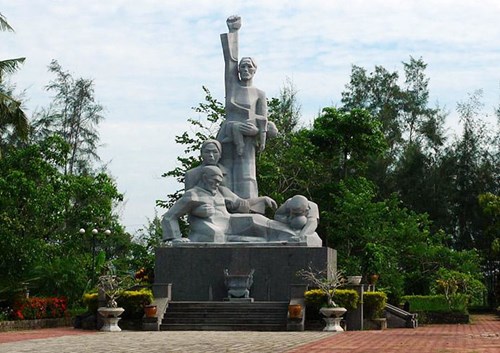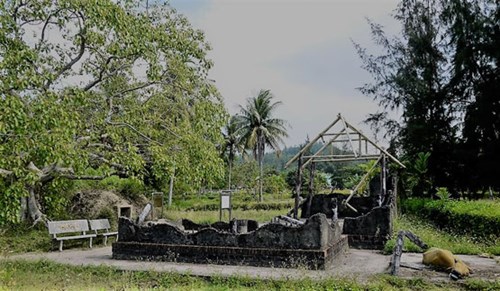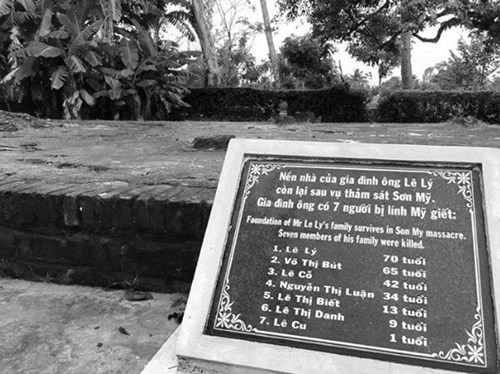An adopted mission
Da Nang is a nice city but even with two days to explore, I had no intention of staying there any longer. What I wanted to do next was to enjoy the fresh air and scenery of the countryside, and more importantly I had decided on an “adopted mission” - going to make the pilgrimage that my high school history teacher could not.
Eventually, I found a place that would rent me a motorbike, a solid, albeit a little old, Kawasaki, which at least was like my own bike, at home in Hanoi. I checked Google again and even though the map said about three hours and fifteen minutes, I guessed with my defensive style of driving and unfamiliar roads, it could be more like a four-hour drive. So, I left the city centre and headed south just after 11 in the morning. Suddenly, I was in a world of my own, imagining I was undertaking some sort of military operation, but “operation” was a poor word in present circumstances and instead, I tried to imagine what the place would be like now. There was a memorial as I had seen photos of this and it reminded me a lot of the monument over Oscar Wilde’s tomb in Paris.
    |
 |
|
At Son My Relic Site in Quang Ngai province |
I remember little of the drive south except some amazing views of the sea on my left and an increasingly strong nervous tightness in my stomach.
Place names would also prove a problem as the place I was going to essentially did not exist anymore, and had ceased to exist one day, 16 March 1968, about 18 months before I was born.
As I approached the town of Tinh Khe, in Quang Ngai province, I began to worry that there would be nothing left to see due to the building and subdivision of the land. What had been a group of 4 small hamlets just north of the Tra Khuc river estuary was now marked by a memorial statue and a sprawling modern town with one remnant of a hamlet still visible, Son My.
I located the turn relatively easily and then found myself in a courtyard of a small museum looking at the much-anticipated memorial.
In the footsteps of mass-murderers:
Considering the unspeakable events that happened in this place on that fateful March day, I could not help but notice that the memorial itself was flanked by a nursery school and a high school, and my memory flashed to photos showing the bodies of infants, toddlers and small children, some with the bodies of their mothers, grandfathers or grandmothers nearby, some with protecting, shielding but lifeless arms still wrapped around them.
    |
 |
|
Hut remnant in Son My (My Lai) |
Next, I was reminded of Mrs. Nguyen Thi Tau (chin Tau) who, taking care of her two small grandchildren while her son - their father was at the market, witnessed a US Army GI destroy these two fragile lives using the bayonet of his M16 rifle, before she herself was pushed, kicked and dragged to a ditch on the edge of her village where an US Army officer, possibly Lt. Calley himself, according to his own sworn testimony, hit her on the side of her face with the base of his rifle and then shot her in the head. Finally, I thought about my history teacher who, was a young man when the My Lai/Son My massacre happened and how angry but powerless he must have felt when he read about this terrible atrocity in the newspapers. His anger must have multiplied when later, he found himself teaching about a period of his own life.
While I was standing contemplating the fitting memorial statue to those innocents who died 50 years ago today, a number of boys came out of the high school and saw a stranger. They were curious and approached. I, on the other hand, was curious to know if they were aware of the historical importance of this little museum on a back road in their little town and after chatting with them I asked them. Immediately, their faces became more solemn and, as one person, they looked down and started to speak in their broken English in a quieter voice. I was truly impressed by the respect these teens had for the very history surrounding them.
    |
 |
|
A memorial stone in Son My (My Lai) |
I hoped that, as Vietnam is progressing and developing quickly in all directions, the younger generation would always remember the My Lai/Son My tragedy and recall the words of Ho Chi Minh: "Our mountains will always be, our rivers will always be, our people will always be, the American invaders defeated, we will rebuild our land ten times more beautiful.”
These boys then showed me through a wall into what looked like a construction site with small mounds of earth and gravestones and what looked like land which a long time ago had been paddy fields. They told me that some of the graves belonged to the victims and the small mounds were the victims had been buried in mass graves in the days immediately after the massacre. They then brought me to an area that looked like a wilderness until I noticed that there had been some structures built there and some aluminum-topped out-buildings were built right up to the edge of this area. The boys explained that this was the last remnants of My Lai and nothing else remained.
I felt truly honoured and fortunate to have seen this and made my pilgrimage in honour of the innocent victims of Lt Calley and his henchmen; the grandparents, nursing mothers, infants, toddlers and small boys and girls.
I know my old teacher would approve.
Franc Neary